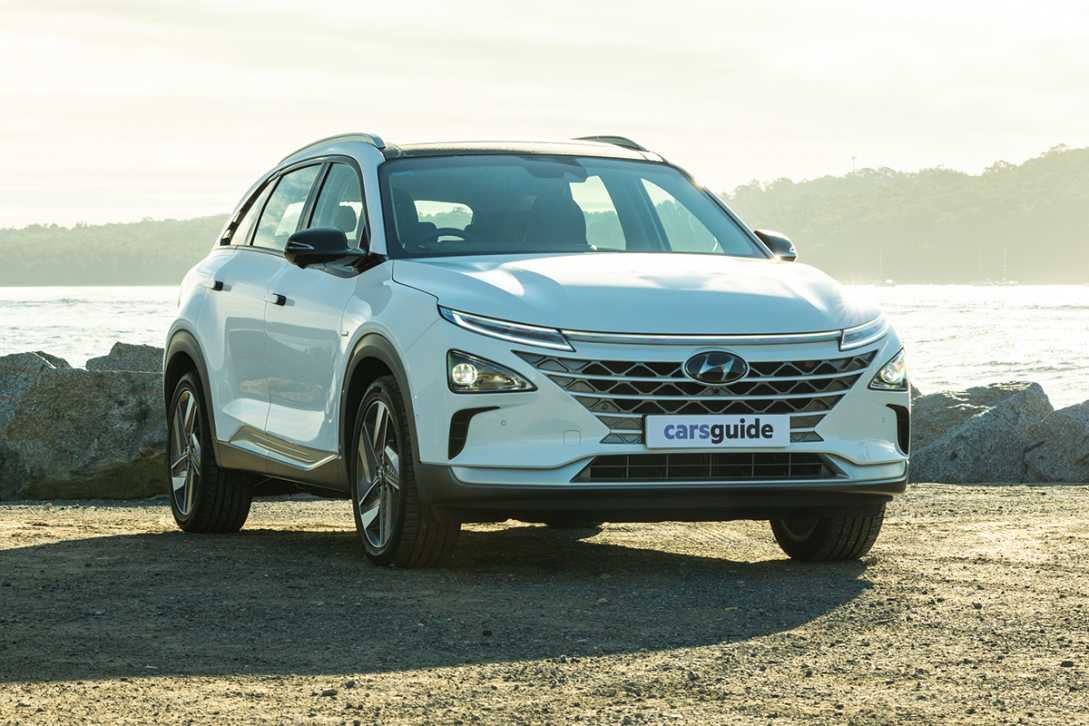It’s no secret Hyundai is going hard on hydrogen fuel cell (FCEV) tech, positioning itself to be able to convert internal-combustion cars across to its new FCEV drivetrains if need be.
Alongside an announcement earlier this year that Hyundai Group would aim to transform South Korea into “the world’s first hydrogen society”, the brand also shared plans for a next-generation Nexo to be accompanied by two new FCEV stacks in both 100kW and 200kW forms.
These new-generation stacks will be built at two new factories designed to nearly quadruple the annual number of fuel cells being built. But aside from a replacement Nexo, what does that mean for Hyundai’s range?
Off the back of the brand declaring it would build a hydrogen version of the Staria people mover, we put the question to the Australian division if it saw other models in the range being so easily converted.
After all, the Staria is thus far traditionally powered by either of the brand’s widely used 3.5-litre petrol V6 or 2.2-litre four-cylinder diesel engines, suggesting most vehicles with either of these drivetrain options and on existing internal combustion platforms could theoretically convert to FCEV.
Local brand product planning boss, Chris Saltipidas, said: “Those next-generation stacks will be available in future models, but there is that kind of flexibility in how they fit into current ICE-platformed vehicles.”
.jpg)
In fact, the existing internal-combustion platforms would be core to Hyundai’s brand going into the electric era, with Mr Saltipidas clarifying the difference between the standard Hyundais and the Ioniq series, stating “all Ioniqs will be on e-GMP going forward, whereas Hyundais will be on ICE platforms with electrification – Ioniq will not replace the Hyundai brand”.
FCEV tech is theoretically swappable into internal-combustion vehicles as its core components closely mirror those of a hybrid car. The combustion power source can be replaced with a similarly sized fuel cell, the fuel tanks can be replaced with high-pressure tanks, and the buffer battery used for regenerative braking and to transition the power from the fuel cell to the wheels only needs to be hybrid-sized, helping keep weight low and packaging easy.
In fact, to show the ‘flexibility’ of the brand’s fuel cell tech, it was recently announced Hyundai would be working with global chemical company, Ineos, on a FCEV version of its much-anticipated Grenadier off-roader.
.jpg)
At launch, the Grenadier will be powered by BMW drivetrains, but its pairing with Hyundai will see a FCEV version some time in 2023 or beyond, with testing to begin in 2022.
Ineos cites the weight advantages of a FCEV system over battery electrification. This makes it ideal for off-road, load hauling, and long-range applications. Ineos also notes its position as a hydrogen producer as an advantage.
Hyundai’s own luxury spin-off brand, Genesis, has announced its plans to go EV and FCEV only by 2030, showing a FCEV concept of its currently conventionally powered GV80 large SUV.
While Hyundai had no further hydrogen plans to announce for Australia for now, it noted the trial program of Nexo vehicles being used by the ACT government was successful, citing “really positive feedback”.
Hyundai’s global hydrogen chief, Sae Hoon Kim, has also stated in the past he believes “Australia will have the cheapest hydrogen in the world” thanks to our potential for harnessing and storing solar energy.



.jpg)




.jpg)






.jpg)



.jpg)
 copy.jpg)
.jpg)
.jpg)
.jpg)






.jpg)
Comments